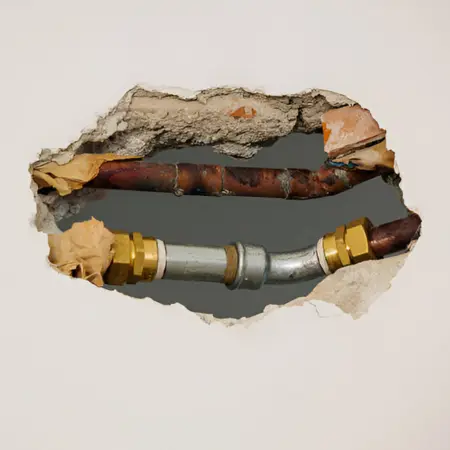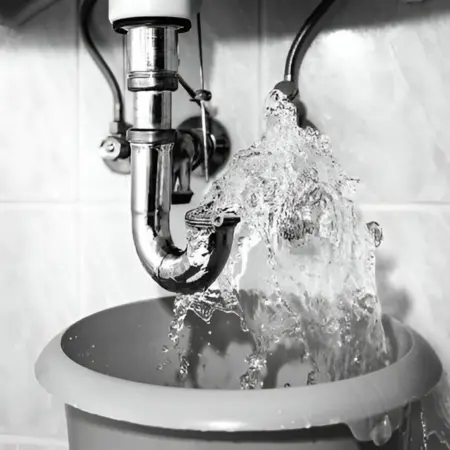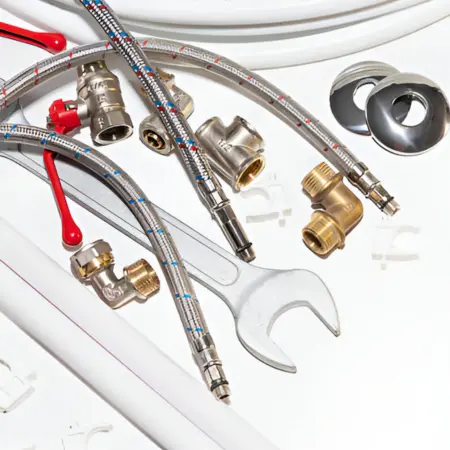Pets are curious creatures, which can sometimes lead to plumbing disasters!
From chewing pipes to causing blockages, your furry friend can damage your plumbing.
Pet-proofing your pipes is easy and keeps both your home and pets safe.
This article is a guide on keeping your pipes safe from your pets.
Key Takeaways
- Pets can accidentally damage plumbing, so take simple steps to protect pipes.
- Choose strong materials like PEX, stainless steel, and copper to prevent chewing damage.
- Use protective covers to shield exposed pipes from pets.
- Secure plumbing fixtures with brackets and clips to stop pets from moving them.
- Keep water lines and cables out of reach, or cover them with strong tubing.
- Create a pet-friendly space with toys and distractions to reduce curiosity.
- Train pets to stay away from pipes and cables using positive boosting.
- Regularly inspect pipes for chew marks, scratches, and loose fixtures caused by pets.
- Fix small issues quickly with tools or covers to prevent bigger problems.
- Call a professional plumber for major damage or help with pet-proofing solutions.
Preventive Measures For Pet-Proof Plumbing
Pets are curious and can cause damage to your plumbing without meaning to.
Taking simple steps can protect your pipes and keep your pets safe.
Here are four easy ways to pet-proof your plumbing and avoid problems.
1. Use Pet-Friendly Materials
Pets, especially dogs and cats, often chew on things out of curiosity and boredom.
Choosing strong, pet-safe plumbing materials can help prevent damage.
For example, flexible piping, such as PEX, is safe for chewing and less likely to break under pressure.
Metal pipes like stainless steel and copper are also strong and harder for pets to damage.
These materials can save you from frequent repairs and protect your pets from sharp edges or leaks.
2. Install Protective Covers
Exposed pipes are an easy target for curious pets.
Protective pipe covers and sleeves can shield them from being chewed and scratched.
These covers come in various materials, including plastic and foam, and are easy to install.
You can secure plumbing fixtures with brackets and clips, like faucets and hoses.
This stops pets from moving and playing with them.
Also, this extra protection keeps your pets safe and your pipes undamaged.

3. Secure Water Lines And Cables
Water lines and plumbing-related cables should be kept out of your pet’s reach.
Secure them by running them through walls, behind furniture, and under cabinets.
If shifting is not an option, use strong cable covers or tubing to protect them.
This stops pets from chewing them, which can cause leaks and injuries.
Properly securing these lines also ensures that your plumbing system functions without disturbance.
4. Create A Pet-Friendly Environment
A pet-friendly environment reduces the chances of your furry friends messing with your plumbing.
Give your pets a space with toys, beds, and distractions to keep them busy.
Training your pets to avoid pipes and cables is also important.
Use positive support to teach them that these areas are off-limits.
Training your pets and giving them a safe space keeps them happy.
It also helps protect your plumbing.
Regular Maintenance Tips For Pet-Proof Plumbing
Regular maintenance is key to keeping your plumbing safe from pets.
Checking for damage early can prevent bigger problems.
Here are three tips to help you inspect, fix, and call a professional when needed.

1. Routine Inspections
It’s important to check your plumbing regularly to spot any pet-related damage.
Look for bite marks, scratches, and chewed pipes that pets might have damaged.
Also, check for loose fixtures and pipes your pet might have moved.
Check all the places where pets like to go, such as under sinks, behind appliances, and around pipes.
Regular inspections help catch small problems before they get worse.
2. Quick Repairs
If you find minor issues, you can fix them yourself.
For example, tighten any loose pipes or fixtures using a wrench.
Cover any small chew marks with protective sleeves and tape if you see any small chew marks.
Quick repairs can prevent bigger damage affecting your plumbing or your pet’s safety.
Taking care of small problems quickly can save you money in the long run.

3. Professional Plumbing Services
It’s time to call a professional plumber if the damage is too big for you to fix.
If you find leaks, cracks, or major damage in your plumbing, a plumber can properly repair it.
They can also help with things like fixing chewed pipes and broken fixtures.
A plumber can help you pet-proof your plumbing.
They might suggest using strong materials and securing pipes where pets can’t reach.
Contact us at OP Plumbing Hub for high-quality services.
Conclusion
This article discusses how to pet-proof your plumbing.
It keeps your pets and home safe.
Simple steps like securing pipes and using strong materials can prevent damage.
A professional plumber can help with the best solutions. Contact us at OP Plumbing Hub for reliable services.
